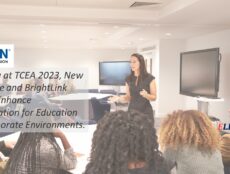
Articles
Editor’s Picks
K-12
The Virtual High School Announces Above-Average AP Exam Pass Rates
By Henry Kronk
June 11, 2019
The Virtual High School, a non-profit begun by a Department of Education technology grant in 1996, announced on Monday that students who take their online courses continue to pass the AP exams at rates higher than the national average in numerous subjects.
Stand outs for the 2018 tests included the Computer Science exam, where 96% of Virtual High School students earned a score of 3 or above, which is required to pass. The national average pass rate was 71%. For AP English Literature and Composition, 72% of VHS students passed compared to 47% nationally.
In the world of online high school course taking, this news stands out. For many online courses, high school students do not perform as well on average as their face-to-face peers.
The Virtual High School Has Observed Some Above Average Performance Online for 10 Years
Of the 38 AP exams offered by the College Board, The Virtual High School offers online courses to prepare students for 23 of them. Of these, students taking 12 separate exams exceeded the national average. Besides Literature and Composition, five others—the U.S. History, U.S. Government and Politics, Human Geography, English Language and Composition, and European History—are among the most difficult tests, with pass rates between 50% and 60%.
“Our high AP exam pass rates are a reflection of the quality and dedication of our teachers, our rigorous curriculum, and our students’ commitment to success,” said Carol Ribeiro, President & CEO of VHS, in a prepared statement. “We are pleased to prepare students for college and help them gain college credit for courses they are taking while still in high school, and we are proud that so many of our students have exceeded the average national AP exam pass rates year after year.”
How These Results Compare to Other Online Initiatives
By contrast, many other online courses among high schoolers often result in below-average academic outcomes. A 2015 study by the Center for Research on Education Outcomes (CREDO), which is associated with Stanford University, found that attendance at a virtual charter school resulted in the equivalent of losing 72 days of education in reading and 180 days of education in math. That was based on a 180 day school year.
Another popular online option, online credit recovery courses, have been found recently to improve high school graduation rates. But, at the same time, learners tend to score lower on them than peers taking a face-to-face credit recovery course.
Part of this disparity might be explained by the types of students these various online offerings accommodate. Online credit recovery courses are inherently designed for learners who have already failed a course.
A Virtual High School case study regarding the use of their courses at Archbishop Williams High School in Braintree, Mass., meanwhile, discusses how they “accommodate high-fliers.”
This sentiment has been echoed elsewhere in eLearning Inside coverage. While discussing an unrelated Vermont state eLearning initiative, Act 77, South Burlington High School Principal Patrick Burke spoke about his experience with dual enrollment, where learners take both traditional high school courses along with remote ones.
“I have not yet seen dual enrollment as a nexus for college for students who were not otherwise predisposed to it,” Burke said. “I have seen early college start to do that a little bit, but we still have our training wheels on. Most kids who are doing dual enrollment in my school right now were probably predisposed toward going to college anyway.”
Online education is still often misunderstood, especially at the high school level. Work conducted by organizations like the Virtual High School, however, show promising gains.
Featured Image: 85Fifteen, Unsplash.









No Comments